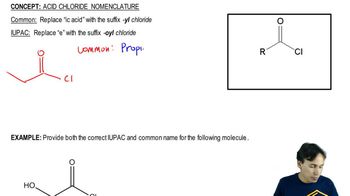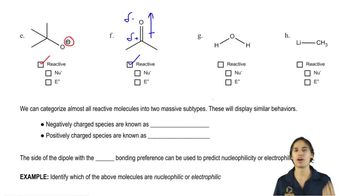Show how you would synthesize the following esters from appropriate acyl chlorides and alcohols.
(c) benzyl benzoate
(d) cyclopropyl cyclohexanecarboxylate

 Verified step by step guidance
Verified step by step guidance Verified video answer for a similar problem:
Verified video answer for a similar problem:



 9:32m
9:32mMaster NAS - The Three Rules with a bite sized video explanation from Johnny
Start learning